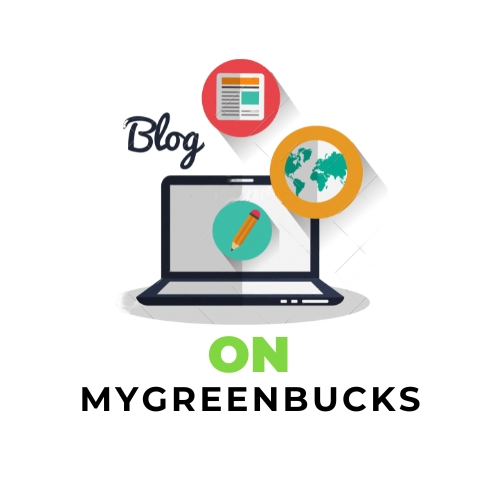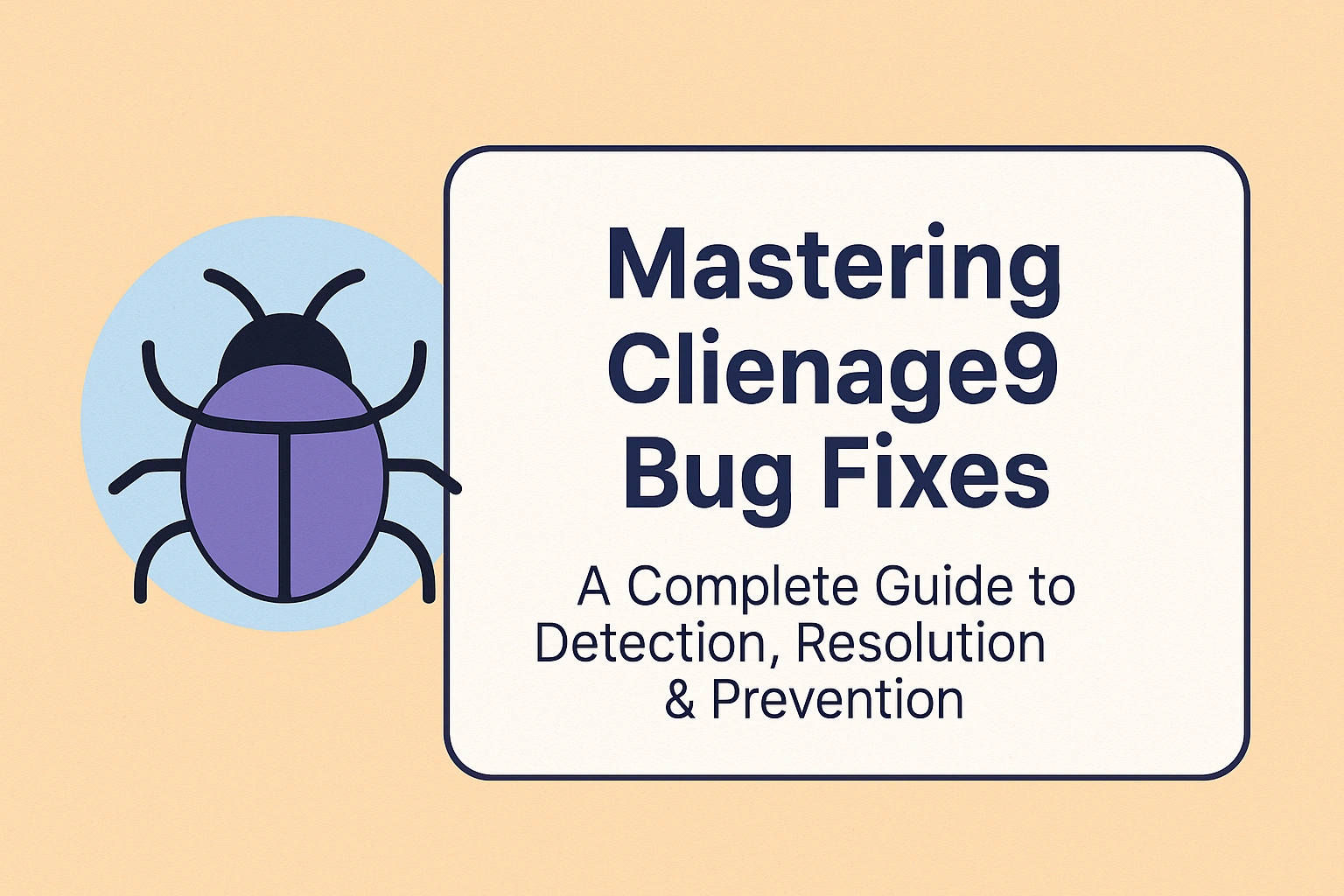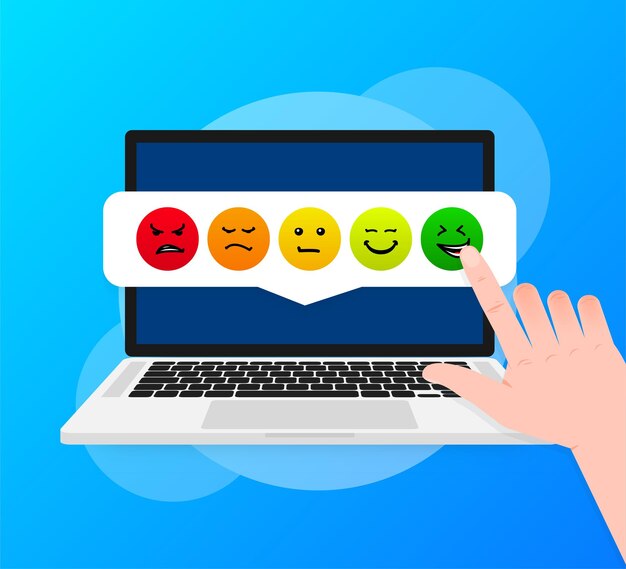Your Ultimate Guide to Clienage9 Bug Fixes and System Stability
Software teams that rely on Clienage9—whether to manage customer lifecycles, sales pipelines, or data-driven marketing campaigns—know how mission-critical stability is. A single unhandled exception can stall automations, corrupt analytics, or confuse the very clients your organization is nurturing. That makes clienage9 bug fixes a strategic discipline, not just an engineering chore. In this in-depth guide we’ll unpack everything from identifying defects to validating patches, so you can keep your platform fast, stable, and future-proof.
1. Why Bugs Slip Through in the First Place
Even with robust coding standards, defects creep in for several reasons:
| Cause | Real-World Example in Clienage9 |
|---|---|
| Complex integrations | A webhook race condition between Clienage9 and a legacy ERP doubled order-fulfillment emails. |
| Rapid feature velocity | A rushed sprint introduced an off-by-one error in the campaign scheduler. |
| Environment drift | QA ran on Node.js 18 while production quietly upgraded to 20, exposing an async/await timing bug. |
| Hidden data shape changes | A third-party enrichment API started returning null for a required field, crashing a transformation pipeline. |
Knowing these root causes shapes a proactive roadmap of clienage9 bug fixes—before they bite users downstream.
2. Building a Bulletproof Bug-Capture Pipeline
-
Real-time monitoring & alerting
Telemetry first. Use Grafana dashboards, Datadog APM, or New Relic to watch CPU spikes, memory leaks, 500 errors, and user exit rates. -
Structured user feedback loops
Encourage support agents to tag tickets with the build number and a reproducibility flag. This “ground truth” funnels real anecdotes into your Jira board. -
Feature-flag-driven releases
By dark-launching new code behind toggles, you can confine risk to internal teams while gathering metrics in production. Rolling back becomes a one-line config change—not a midnight code deploy.
With this triad in place, your backlog of clienage9 bug fixes will begin life as small, well-scoped tickets instead of sprawling mysteries.
Read More:mygreenbucks net kenneth
3. Triage: Sorting the Critical From the Cosmetic
A five-level priority matrix helps engineering, product, and CX speak the same language:
| Priority | Definition | SLA |
|---|---|---|
| P0 – Outage | Data loss, major workflow down | Hotfix in < 2 h |
| P1 – Critical | Severe functional break, narrow scope | Patch ≤ 24 h |
| P2 – High | Business-impact bug with workaround | Patch ≤ 3 d |
| P3 – Medium | Minor functionality or UX flaw | Next sprint |
| P4 – Low | Cosmetic / enhancement | Backlog grooming |
Explicit SLAs keep clienage9 bug fixes predictable and reassure stakeholders that the loudest voice doesn’t always win.
4. Reproducing and Root-Causing the Issue
-
Create a minimal failing example (MFE). Strip the scenario down to the fewest steps that consistently trigger the bug.
-
Mirror production data. If privacy rules allow, replicate anonymized records and environment variables.
-
Use time-travel debugging. Tools like Replay.io or Visual Studio Code’s trace recorder help inspect async state in JavaScript/TypeScript stacks.
-
Check dependency graphs.
npm lsorpnpm whyoften reveal a surprising indirect upgrade that changed behavior.
These practices accelerate clienage9 bug fixes by eliminating the guesswork and finger-pointing that cost engineering hours.
5. Designing the Fix (Not Just a Patch)
Before you crack open your IDE, document:
-
Hypothesis: Why you think this change will solve the bug.
-
Blast radius: Components, micro-services, or schemas that could break.
-
Migration path: DB migrations, cache invalidations, or API versioning steps.
Architecture Decision Records (ADRs) or lightweight RFCs let reviewers assess changes against scalability, security, and maintainability—so clienage9 bug fixes don’t morph into future tech debt.
6. Writing the Code—With Safety Rails
-
Unit tests first. A failing test asserts the bug’s presence; the subsequent green test proves it’s gone.
-
Property-based testing. Libraries like fast-check uncover edge cases your hand-written examples miss.
-
Type-safe contracts. If you use TypeScript or Kotlin, leverage strict null checks and exhaustive
switchstatements.
Aim for a commit narrative that reads: “clienage9 bug fixes – prevent null ref in CampaignScheduler when targetTimeZones missing.”
7. Continuous Integration and Automated Validation
A modern CI pipeline for Clienage9 should:
-
Lint and static-analyze code (ESLint, SonarQube).
-
Run unit + integration tests on every pull request.
-
Spin up ephemeral environments using Docker Compose or Kubernetes namespaces to validate the branch against realistic data.
-
Perform security scans (Snyk, OWASP ZAP).
-
Notify Slack channels with build status, coverage diffs, and performance budgets.
Treat CI failures as blockers; otherwise yesterday’s clienage9 bug fixes will be tomorrow’s incidents.
Read More: latest news mygreenbucks.net
8. Peer Review: More Than a Rubber Stamp
Effective reviews:
-
Focus on test coverage—not indentation debates.
-
Ask why, not how. Challenge assumptions in the root-cause analysis.
-
Share domain context. Reviewers add value by recalling similar historical bugs or architectural constraints.
This collaborative culture ensures clienage9 bug fixes elevate overall code quality rather than merely extinguishing fires.
9. Deploying With Confidence
Release trains and blue-green deployments let you ship often without fear:
-
Canary slices—send 5 % of traffic to the new build, watch SLOs, then ramp up.
-
Automatic reversion—if error budgets breach thresholds, CI/CD rolls back the artifact.
-
Immutable artifacts—use SHA-tagged containers so your “1.9.3-hotfix” is identical across staging, canary, and prod.
Such rigor prevents “works on my machine” surprises in clienage9 bug fixes while keeping release velocity high.
10. Post-Deployment Verification
After the patch lands:
-
Run synthetic checks via k6 or Postman monitors to assert critical user journeys.
-
Analyze user sentiment—did support tickets drop? Are NPS scores recovering?
-
Hold a mini-retrospective—capture lessons learned, update runbooks, and perhaps add a smoke test to CI.
A closed-loop feedback cycle transforms episodic clienage9 bug fixes into a learning engine.
11. Documentation and Knowledge Sharing
-
Changelogs—human-friendly release notes help CX teams craft proactive customer emails.
-
Runbooks—step-by-step recovery guides shorten incident MTTR.
-
Internal wikis—host FAQs, code snippets, and architectural diagrams so new hires ramp up quickly.
Investing in docs may feel tedious, but it pays dividends when future clienage9 bug fixes surface at 2 a.m.
12. Preventive Strategies and Best Practices
| Preventive Measure | Benefit |
|---|---|
| Chaos engineering | Surfacing resilience gaps before real users feel pain. |
| Contract tests for integrations | Early warning when a partner API or micro-service breaks compatibility. |
| Static type coverage ≥ 95 % | Compiler catches null dereferences that would otherwise slip into prod. |
| Performance budgets | Alert teams to creeping regressions that masquerade as “slow bugs.” |
The fewer defects you ship, the fewer clienage9 bug fixes you must chase later.
13. Future Roadmap for Clienage9 Stability
-
AI-assisted code review—LLMs highlight latent nullability hazards or insecure patterns.
-
Self-healing infrastructure—Kubernetes operators that auto-roll pods when health checks fail.
-
Real-user monitoring (RUM) analytics—granular insight into geographic, device-level performance drifts.
By evangelizing these initiatives, you’ll transform reactive clienage9 bug fixes into predictive maintenance.
Conclusion
Bugs are inevitable, but customer disappointment isn’t. When you combine disciplined monitoring, hypothesis-driven debugging, airtight CI/CD, and empathetic post-mortems, clienage9 bug fixes become a seamless part of continuous improvement instead of emergency triage. The payoff? Happier users, a calmer engineering team, and a product that earns trust sprint after sprint.
Quick-Fire FAQs
Q1. How long do typical clienage9 bug fixes take from report to production?
A mature workflow can ship hotfixes in 2 hours for P0 issues and within one sprint for non-critical defects.
Q2. What’s the single most effective way to reduce clienage9 bug fixes over time?
Automated tests with high code-coverage, paired with contract tests for third-party APIs, catch regressions before they hit production.
Q3. Do I need dedicated QA engineers for clienage9, or can developers own testing?
Dual ownership works best: developers write unit/integration tests, while QA focuses on exploratory, usability, and edge-case scenarios that complement automated coverage.
Read Also: chennai super kings vs gujarat titans match scorecard ,india national cricket team vs australian men’s cricket team match scorecard







